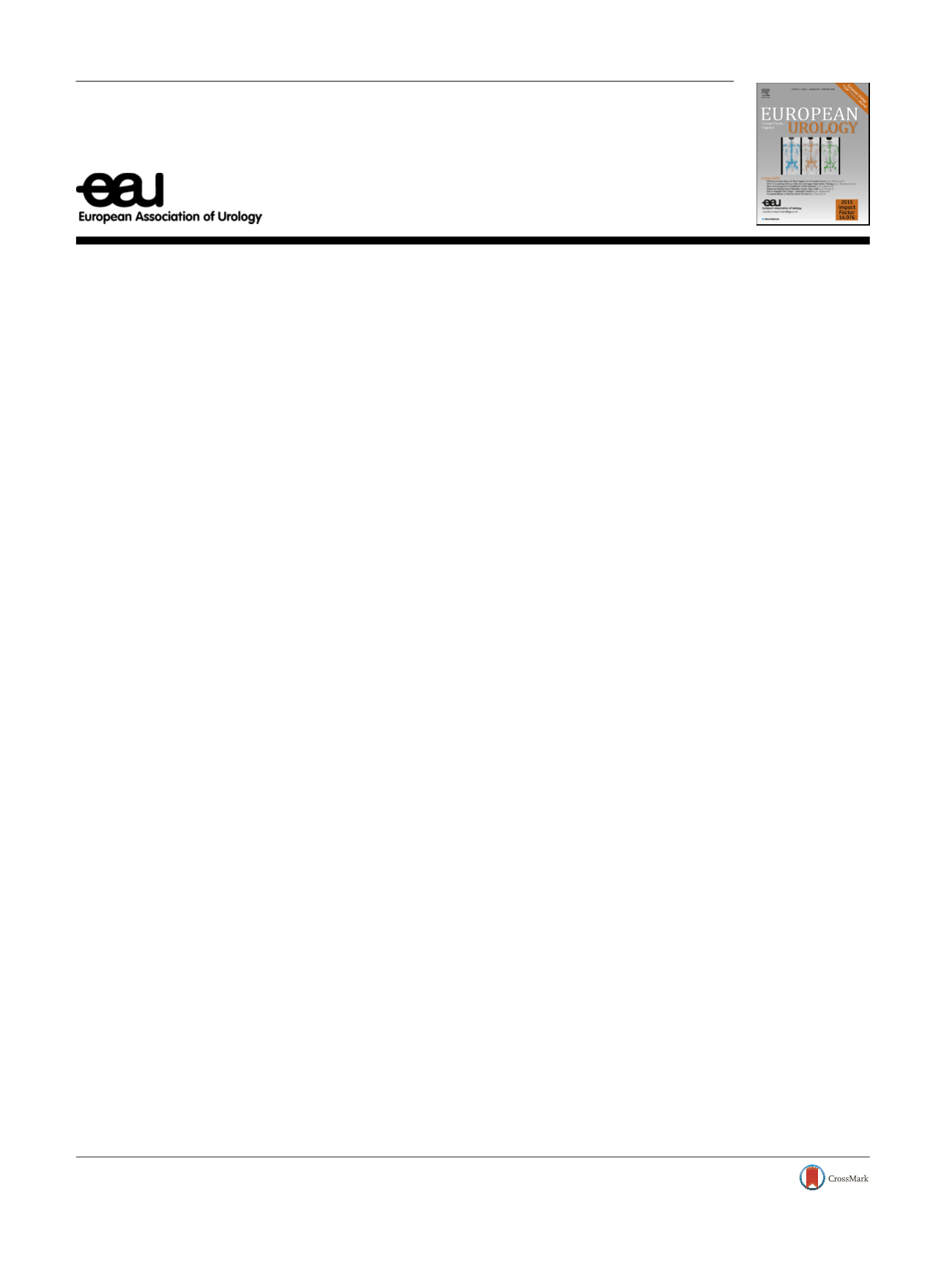

Platinum Priority – Editorial
Referring to the article published on pp. 712–735 of this issue
Value of Prostate Cancer Care: New Information on New Therapies
Suggest Less is More
Timothy J. Wilt
a , b , * ,Philipp Dahm
c , da
Minneapolis VA Center for Chronic Disease Outcomes Research, Minneapolis, MN, USA;
b
Department of Medicine, the University of Minnesota School of
Medicine, Minneapolis, MN, USA;
c
Minneapolis VA Health Care System, Urology Section, Minneapolis, MN, USA;
d
Department of Urology, University of
Minnesota School of Medicine, Minneapolis, MN, USA
[1_TD$DIFF]
Prostate cancer remains one of the most controversial topics
in health care and likely the leading ‘‘hot button’’ issue in
urology. Decisions on whether, who, and how to screen and
treat persist despite decades of research and thousands of
publications. Decisional dilemmas for patients, clinicians,
and payers have become seemingly more complex with the
widening array of newer diagnostic and treatment technol-
ogies and the growing recognition of the importance of
health care costs and value-based clinical decisions. The
report by Schroeck and colleagues
[1]in this month’s issue
of
European Urology
provides useful, albeit sobering,
information about the costs and cost-effectiveness of newer
technologies for men with localized or locally advanced
prostate cancer. Their findings, along with recent results
from treatment trials in men with early stage prostate
cancer
[2,3], provide needed caution in the ever escalating
‘‘arms race’’ and widespread use of newer higher-cost
radical interventions.
The authors conducted a systematic review (SR) of
studies evaluating the costs and cost-effectiveness of
robotic assisted laparoscopic prostatectomy, intensity
modulated radiation therapy, and proton beam therapy
versus their ‘‘older’’ radical intervention comparators. The
review was rigorously conducted using the Grades of
Recommendation, Assessment, Development, and Evalua-
tion approach to rating the quality of evidence, which goes
beyond study design when assessing confidence in the body
of evidence. Appropriately, Schroeck et al
[1]describe
evidence limitations and advise caution in study-derived
estimates. Most studies were observational and therefore
rated at high risk for selection bias and confounding. In
addition, many were conducted exclusively in the US,
thereby raising concerns about their applicability. Studies
were sensitive to assumptions about health outcomes
(often optimistic or incomplete), patient/tumor selection
criteria, and/or the perspective utilized. In summary, they
rated the evidence quality for most comparison as low at
best and concluded that ‘‘
. . .
treatment with new versus
traditional technologies is costlier. However, given the low
quality of evidence and the inconsistencies across studies,
the precise difference in costs remains unclear. Attempts to
estimate whether this increased cost is worth the expense
are hampered by the uncertainty surrounding improve-
ments in outcomes, such as cancer control and side effects
of treatment’’
[1]. We agree with these conclusions.
The study by Schroek et al
[1]is limited by its comparison
of newer technologies to the traditional modalities of open
surgery or radiation, thereby side-stepping the question
whether all men need to be treated. It omitted a cost-
effectiveness analysis
[4] ,as well as trial evidence from
PIVOT [2]and ProtecT
[3]demonstrating that observation (or
prostate-specific antigen [PSA]-based monitoring) has simi-
lar overall and prostate cancer-specific mortality, fewer
treatment harms, lower costs, and superior quality adjusted
life years than radical interventions including intensity
modulated radiation therapy. Given a paucity of evidence
from randomized trials on patient-important outcomes such
as overall and disease-specific mortality, cost-effectiveness
analyses largely hinge on extrapolations from surrogate
measures such as biochemical failure, adding additional
E U R O P E A N U R O L O G Y 7 2 ( 2 0 1 7 ) 7 3 6 – 7 3 7available at
www.scienced irect.comjournal homepage:
www.europeanurology.comDOI of original article:
http://dx.doi.org/10.1016/j.eururo.2017.03.028.
* Corresponding author. Department of Medicine, University of Minnesota School of Medicine, 1 Veterans Drive (111-0), Minneapolis, MN 55417, USA.
Tel.: +1 612 467 2681; fax: +1 612 467 2118.
E-mail address:
tim.wilt@va.gov(T.J. Wilt).
http://dx.doi.org/10.1016/j.eururo.2017.05.0230302-2838/Published by Elsevier B.V. on behalf of European Association of Urology.
















